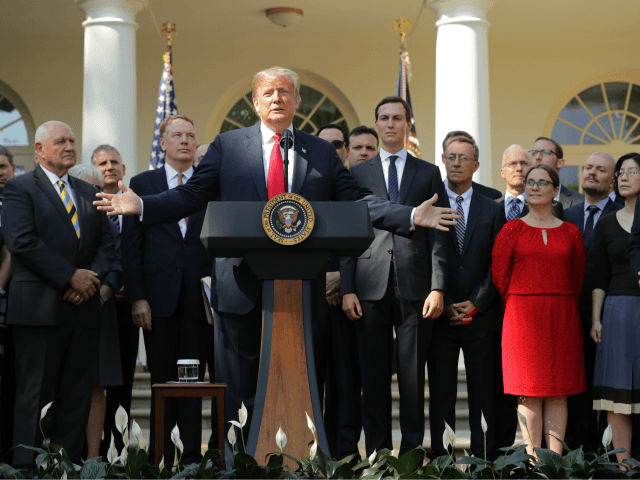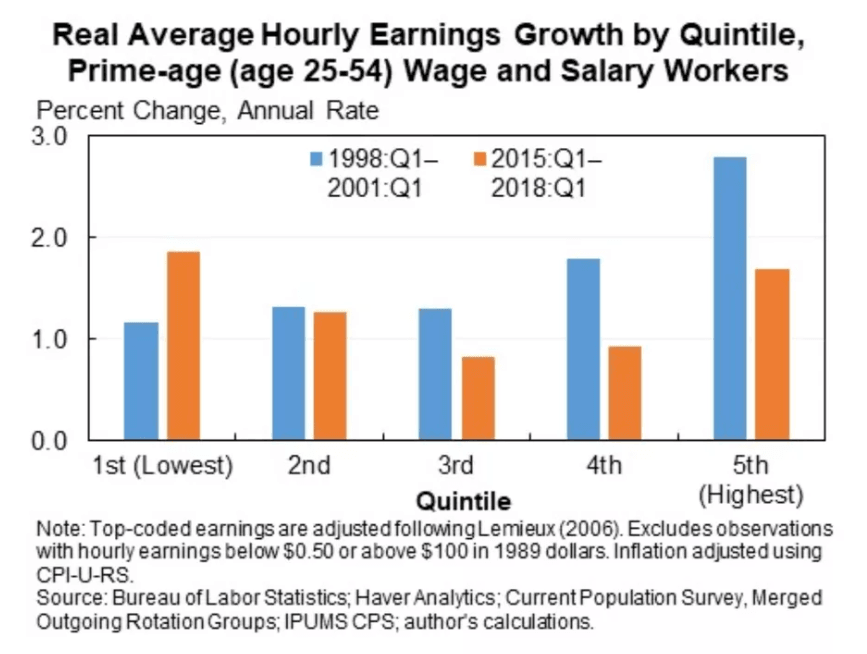Business lobbyists and the Mexican government have preserved two small but open-ended visa-worker programs in the updated NAFTA treaty.
“On the question of visas, we have retained existing NAFTA language on that, but not gone beyond it,” an official told reporters before the U.S.-Mexico-Canada Trade Agreement (USMCA) deal was released Tuesday.
Pro-American immigration reformers want to see the TN visas cut back, in part, because visa allows employers to import cheap foreign college-graduates to work in several dozen professions. The careers include landscape architects, graphic designers, interior designers, management consultants, social workers, therapists, vocational counselors and many more.
The preservation of the TN program in the trade treaty is also a problem for reformers because it provides a fall-back for outsourcing companies if middle-class pressure forces Congress to trim or end the existing H-1B, OPT, and L-1 visa-worker programs. These unpopular visa-worker programs now keep roughly 1.3 million foreign college-graduates in U.S. jobs because they are fiercely defended by investors and business groups, such as the pro-investor group FWD.us and immigration lawyers.
“This [TN visa] provision could turn out to be very harmful to Americans,” said Jessica Vaughan, policy director at the Center for Immigration Studies. She continued:
This deal nullifies congressional control over guest worker entries in the stipulated professions. It forbids a labor market test, allows unlimited numbers, has no fair pay guarantees, and even lets the spouses work. What’s in this deal for Americans?
We never should include guest worker provisions in trade agreements, especially on terms as open-ended as these, and especially when we have no idea who uses these visas now, and no idea of the effects.
The number of college-graduates using the TN visas is uncertain because the State Department does not release data about the number of Canadians who use the visas to take college-grad jobs in the United States, such as nursing jobs in Detroit hospitals.
However, federal agencies do record the award of TN visas to Mexicans. That data suggests that roughly 45,000 Mexican graduates use the three-year visas to get U.S. jobs and to bring their families into the United States.
In October 2017, Iowa GOP Sen. Chuck Grassley suggested that the TN visa allows 100,000 foreign workers into U.S. college-graduate jobs. “It is estimated that almost 100,000 TN visa holders are working in the United States, in professions ranging from doctors and lawyers to interior designers, librarians and beekeepers,” regardless of the impact on Americans, said a statement from his office.
One advocate for the outsourcing visas, Stuart Anderson wrote:
TN visas are used across many sectors in the American economy. “The dairy industry uses scientists, technologists and veterinarians to place workers in remote areas of the United States,” the report explains. “The same is true for other parts of U.S. agriculture. Instructors at colleges and seminaries, particularly in distant or smaller community settings, are able to use TN visas to employ individuals to teach American students. Engineers, lawyers, accountants and economists are among the many other eligible occupations under NAFTA.”
Finding nurses is more difficult than ever in America and TN visas are used to employ nurses in many states, particularly Michigan and Texas. Canadian nurses often commute from Windsor to Detroit. In fact, the Henry Ford Health System in Michigan employs approximately 300 Canadian nurses.
However, any hospital’s shortage of nurses could be solved if CEOs offered higher wages to hire nurses away from less-popular hospitals, so raising wages throughout the career and encouraging more people to train for a nursing career. That free-market option is hated by business groups and investors because it reduces their stock-market values.
The treaty provisions come amid data showing that wages for college-graduates have stalled in President Donald Trump’s booming economy, partly because many starter-jobs are being filled by the 1.5 million visa-workers.
Even less is know about the treaty’s preservation of the E Visa, which is used by small-scale investors to invest in U.S. businesses, such as hotels or bars. The E visa is not often used for outsourcing jobs, but to encourage people with money to move into the United States.
Four million young Americans will join the workforce this year, but the federal government will also import 1.1 million legal immigrants, and allows an army of at least 2 million blue-collar and white-collar visa-workers to work U.S. jobs, alongside asylum-claiming migrants, refugees, and illegal aliens.
That policy shifts wealth from young people towards older people by flooding the market with cheap white-collar and blue-collar foreign labor.
That flood of outside labor spikes profits and Wall Street values by cutting salaries for manual and skilled labor offered by blue-collar and white-collar employees.
The policy also drives up real estate prices, widens wealth-gaps, reduces high-tech investment, increases state and local tax burdens, hurts kids’ schools and college education, pushes Americans away from high-tech careers, and sidelines at least 5 million marginalized Americans and their families, including many who are now struggling with opioid addictions. Immigration also pulls investment and wealth away from heartland states because investment flows towards the large immigrant populations living in the coastal states.


COMMENTS
Please let us know if you're having issues with commenting.